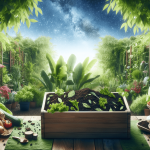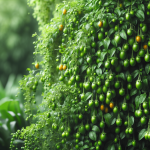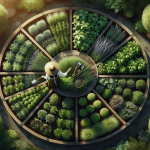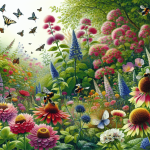This post may contain affiliate links. As an Amazon Associate, we may earn commissions from qualifying purchases.
Have you ever found yourself gazing at your garden, wondering how to make it more manageable and less of a chore? Creating a garden layout that facilitates easy maintenance isn’t just a dream; it’s entirely possible with the right planning and strategies. Let’s walk through how you can design a garden that stays beautiful with minimal effort.
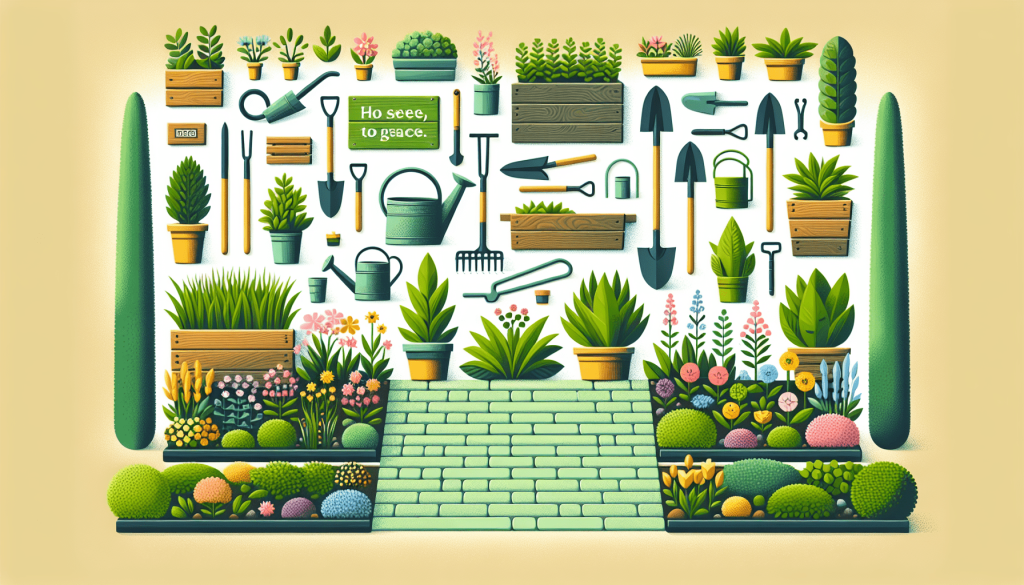
Understanding Your Garden Space
Before you start designing, it’s important to understand your garden space. This means taking a good, long look at what you have and what you’re working with. Measure the area, consider the soil quality, and think about how much sunlight different parts of your garden get. By understanding these elements, you’ll be prepared to make smarter choices.
Measure and Sketch
By first measuring your garden space, you create a baseline for your layout. Grab a tape measure and jot down the dimensions of your garden. This doesn’t have to be a tedious task; think of it as setting the stage for your masterpiece. Next, sketch out the layout—one that allows you to visualize where you want everything to go.
Assess Soil Quality
Soil quality can make or break your garden. A simple soil test can tell you your soil’s pH levels, nutrient content, and structure. Good soil promotes robust plant health, which in turn reduces the need for constant maintenance. If your soil isn’t great, don’t worry; amendments are easily available.
| Soil Type | Characteristics | Amendment Recommendations |
|---|---|---|
| Sandy Soil | Drains quickly, doesn’t hold nutrients well | Compost or organic matter |
| Clay Soil | Drains poorly, can become compact and hard | Sand, organic matter, or gypsum |
| Loamy Soil | Ideal mix of sand, silt, and clay, retains moisture well and drains properly | Maintain with regular compost |
| Silty Soil | Smooth and soapy texture, retains moisture but can compact | Compost or organic mulch |
| Peaty Soil | Dark soil which retains a lot of moisture and has a spongy feel | Lime to adjust pH levels |
| Chalky Soil | Alkaline and often stony, drains quickly | Organic matter and sulfur |
Sunlight and Shade
Understanding how sunlight affects different parts of your garden helps in choosing the right plants for each area. Some plants thrive in full sun, while others prefer shade. Mismatched plant placements can lead to stunted growth and more maintenance work for you.
Choosing Low-Maintenance Plants
After understanding your garden’s specifics, the next step is selecting the right plants. Low-maintenance plants are your best friends in creating an easy-to-manage garden.
Perennials Over Annuals
Perennial plants return every year, saving you the trouble of replanting. While annuals can add bursts of color, they require more frequent maintenance. A mix of perennials with a sprinkle of annuals can offer both beauty and ease.
Native Plants
Plants that are native to your area are naturally adapted to the local climate and soil. They require less water and fewer fertilizers, and they are more resistant to local pests and diseases.
Drought-Tolerant Plants
If you live in an area prone to dry spells, opt for drought-tolerant plants. These plants can survive on minimal water, cutting down on your irrigation tasks. Succulents, lavender, and rosemary are great examples.
Designing Functional Garden Zones
Zoning your garden can make it more functional and easier to maintain. Think about creating different areas for different activities or types of plants.
Edible Garden Zone
Setting up a designated area for vegetables and herbs can make your gardening chores more organized. Keep all your edible plants in one place, preferably close to your kitchen for convenience.
Flower Garden Zone
Flowers add beauty, but they can also be high maintenance. By zoning them, you can concentrate your effort and easily apply specific care routines like deadheading or fertilizing.
Relaxation Zone
Include a space where you can relax and enjoy your garden. This could be a small patio or a cozy corner with a bench. Having a place to sit back and admire your work makes gardening even more rewarding.
Efficient Irrigation Systems
Watering can be one of the most time-consuming tasks in garden maintenance. An efficient irrigation system can save you time and effort.
Drip Irrigation
Drip irrigation systems deliver water directly to the roots of the plants, minimizing wastage. They can be set on a timer, ensuring your plants get the right amount of water even when you’re not around.
Soaker Hoses
Soaker hoses are another great option. They’re easy to install and can water large areas evenly. Simply lay them down around your plants, and let them do the work.
Mulching
Mulch helps retain moisture in the soil, meaning you’ll spend less time watering. It also suppresses weeds, saving you even more maintenance time. Organic mulches like bark or compost can even improve soil quality as they decompose.
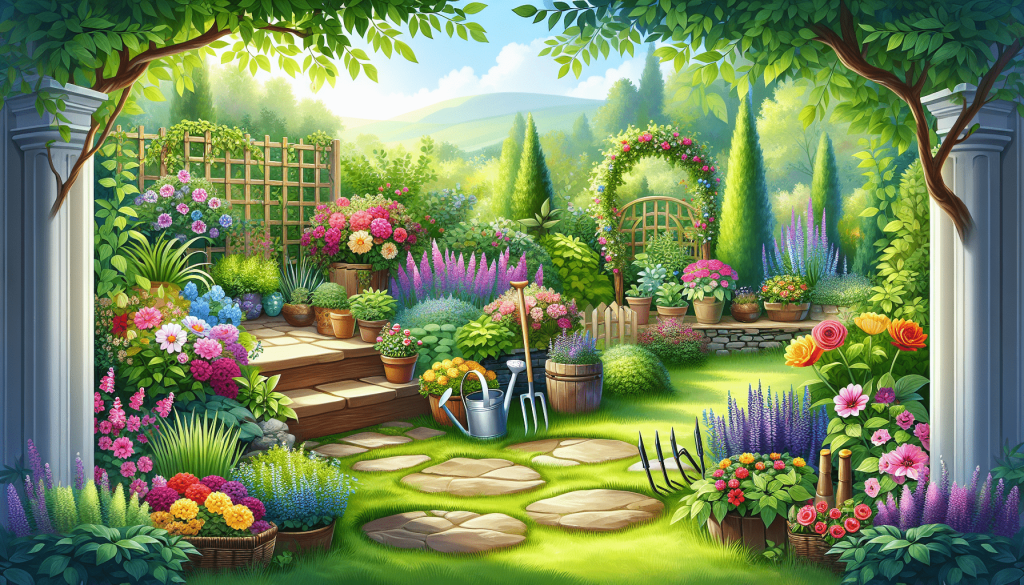
Pathways and Borders
Pathways and borders not only define the different zones in your garden but also make it easier to navigate.
Paved Paths
Paved pathways reduce the mess and make it easy to move through your garden, especially after rains. They provide a clean separation between different zones and keep your shoes mud-free.
Edging
Edging defines the borders of your garden beds, keeping grass and weeds from encroaching. It provides a neat and polished look to your garden. You can use materials like bricks, stones, or even metal to create durable edging.
Smart Garden Tools and Gadgets
Investing in smart garden tools and gadgets can greatly reduce the effort needed to maintain your garden.
Robotic Lawn Mowers
A robotic lawn mower can keep your grass neatly trimmed with minimal intervention from you. These smart devices are programmable and can handle different terrains and lawn sizes.
Automatic Fertilizer Dispensers
Automatic fertilizer dispensers can be integrated with your irrigation system, ensuring your plants get the nutrients they need without you having to remember to feed them regularly. This is particularly useful for edible gardens.
Soil Moisture Sensors
Soil moisture sensors can tell you when your plants need water, preventing both over-watering and under-watering. Some advanced systems can even be connected to your irrigation system to automate the watering process.
Regular but Minimal Maintenance
Creating a low-maintenance garden doesn’t mean no maintenance at all. Regular but minimal upkeep can keep your garden looking great without overwhelming you.
Seasonal Clean-Up
Seasonal clean-up tasks like removing dead plants, trimming, and mulching can keep your garden in top shape. These tasks are usually required only a few times a year but go a long way in reducing overall maintenance.
Quick Weekly Tasks
Spending a few minutes each week on minor tasks like watering, weeding, and checking for pests can keep your garden in good health. These small efforts accumulate and prevent issues from becoming major problems.
Incorporating Ground Cover
Ground cover plants are extremely useful for low-maintenance gardening. They fill in empty spaces, reduce weeds, and add visual interest to your garden.
Types of Ground Cover
- Creeping Thyme: Low-growing and fragrant, great for sunny spots.
- Ajuga: Evergreen and good for shady areas.
- Sedums: Drought-tolerant and low-growing, ideal for rock gardens.
Sustainable Practices
Incorporating sustainable practices can also contribute to easier garden maintenance.
Composting
Creating your compost pile can provide you with rich, natural fertilizers. Composting reduces the need for synthetic fertilizers and helps in soil improvement.
Rainwater Harvesting
Installing rain barrels or a rainwater harvesting system can provide you with free water for your garden. It’s eco-friendly and reduces your water bills.
Conclusion
Creating a garden layout that facilitates easy maintenance isn’t about cutting corners; it’s about being smart with your choices. From understanding your space and choosing the right plants to investing in efficient irrigation systems and smart tools, every step plays a crucial role in making your garden easier to manage. Remember, the goal is to create a space where you can enjoy gardening without it turning into a constant chore. Now, go forth and plan out that dream garden!

